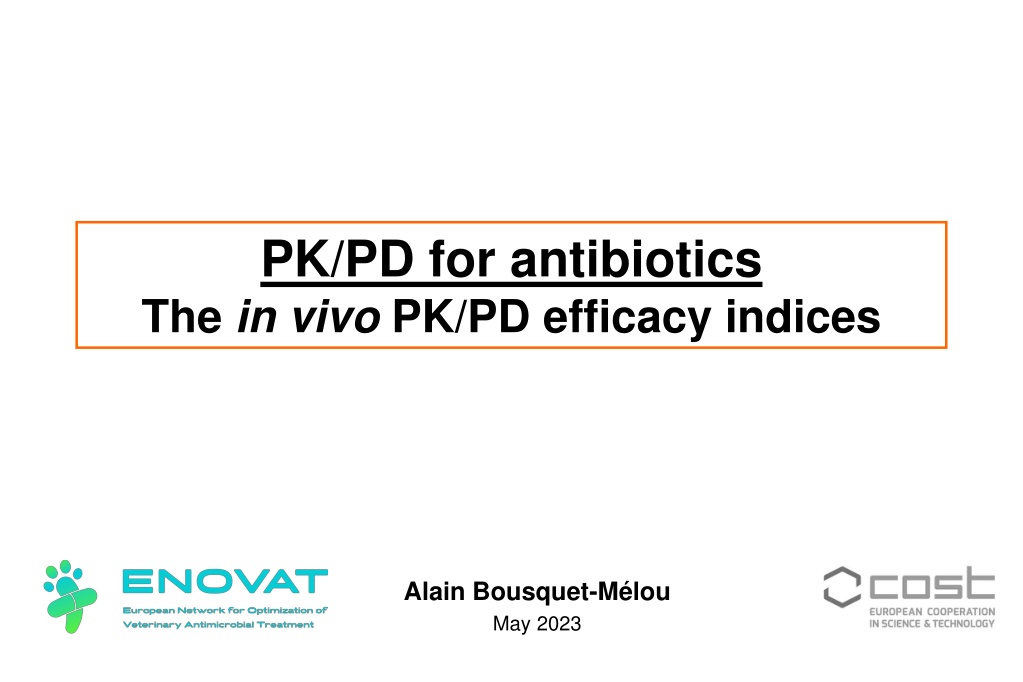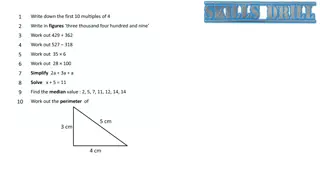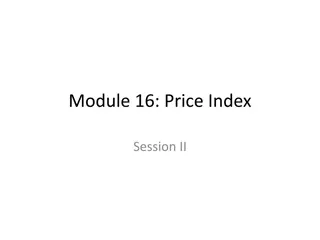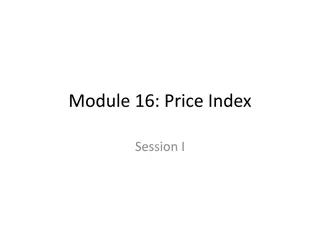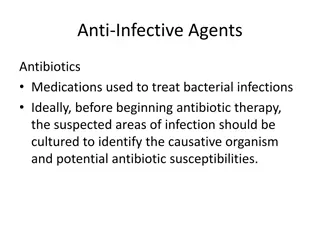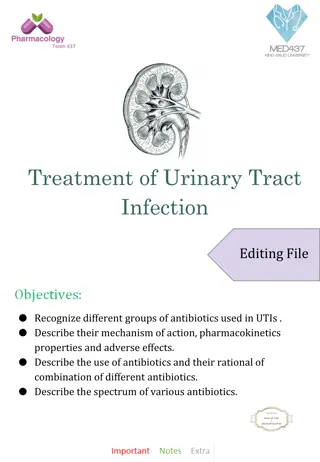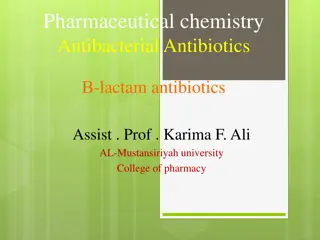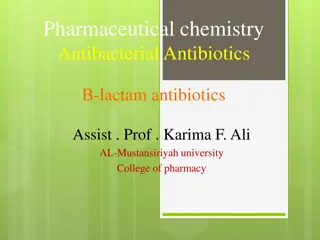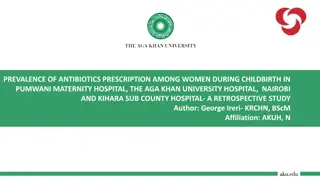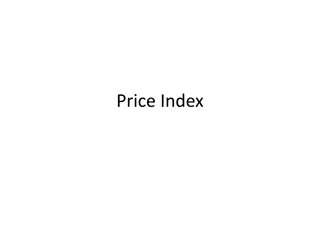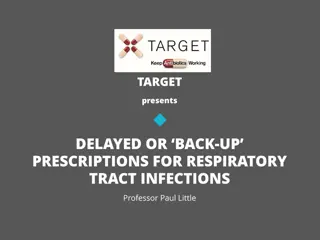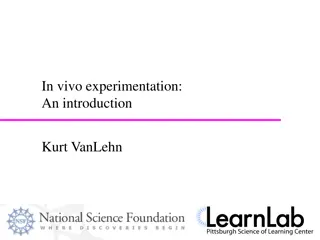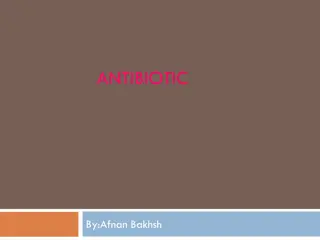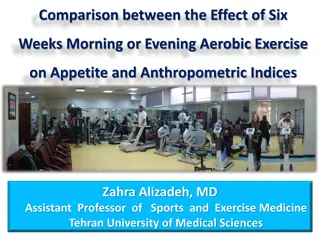Understanding PK/PD for Antibiotics: In Vivo Efficacy Indices
This information delves into the PK/PD approach for antibiotics, emphasizing the importance of plasma concentrations in controlling infection site concentrations, details on pathogen locations, binding to plasma proteins, and the significance of tissue concentrations for predicting treatment efficacy.
Download Presentation

Please find below an Image/Link to download the presentation.
The content on the website is provided AS IS for your information and personal use only. It may not be sold, licensed, or shared on other websites without obtaining consent from the author. Download presentation by click this link. If you encounter any issues during the download, it is possible that the publisher has removed the file from their server.
E N D
Presentation Transcript
PK/PD for antibiotics The in vivo PK/PD efficacy indices Alain Bousquet-M lou May 2023
PK/PD approach for antibiotics What information is needed/available ? Dose of active ingredient administered Therapeutic effect in vitro PD MIC Rates of bacterial killing in vivo PK PK data PK/PD efficacy indices ABSORPTION Infectious site concentrations Plasma concentrations ELIMINATION DISTRIBUTION PHARMACOKINETICS PHARMACODYNAMICS
Why plasma concentrations ? Because they control the concentrations at the infection site where pathogens are located
Where are the pathogens located? Intracellular pathogens (mandatory) Most of pathogens are extracellular Chlamydia Rickettsia Brucella Lawsonia intracellularis Streptococcus pneumoniae Escherichia coli Klebsiella pneumoniae Mannheimia haemolytica Pasteurella multocida Actinobacillus pleuropneumoniae Mycoplasma hyopneumoniae Bordetella bronchiseptica Intracellular pathogens (optional) Rhodococcus equi Staphylococcus aureus Escherichia coli Salmonella typhi Listeria Mycobacterium tuberculosis Streptococcus suis
Binding to plasma proteins (fu) When bacteria are intracellular : The volume of distribution (Vd) is to consider Bacteria ATB Bound ATB Bound Diffusion/permeability ATB free ATB Free Blood ECF = ExtraCellular Fluid The free plasma concentrations of the antibiotic control the concentrations of the extracellular biophase !!! EXCEPT if barriers !!! -Physiological: brain, prostate, eye (posterior chamber) -Pathological : clot, abscess, ...
Tissue concentrations For PK/PD approach/modelling, it is mandatory to consider free concentrations In vitro, in standard broth, there is no binding the assessed activity by MIC or time-kill curves is the activity of the free drug The in vitro activity needs then to be compared to free plasma/tissular concentrations to predict efficacy of the treatment
The in vivo PK/PD efficacy indices Way to standardize plasma exposure, according to the pathogen susceptibility (MIC) Plasma exposure in terms of Intensity and/or Duration Threshold values of these indices "guarantee" the cure with a certain probability (usually 80-90%)
The in vivo PK/PD efficacy indices Step 1 : To identify the more relevant PK/PD index for the drug Step 2 : To determine the value of this PK/PD index that needs to be reached to ensure efficacy
The in vivo PK/PD efficacy indices Intensity Plasma concentrations Peak / MIC (Cmax/MIC) Area24h under the curve / MIC (AUC24h/ MIC) MIC Time > MIC (T > MIC) Time Duration
The PK/PD index best correlated with efficacy depends on the antibiotic class
Relationship between 3 PK/PD indices and Streptococcus pneumoniae counts after 24 h of treatment with temafloxacin Fluoroquinolone Andes & Craig, Int J Antimicrob Agents, 2002 Mouse model Thigh infection Neutropenic animals
Relationship between 3 PK/PD indices and Klebsiella pneumoniae counts after 24 h of treatment with ceftazidime Beta-lactam Andes & Craig, Int J Antimicrob Agents, 2002 Mouse model Thigh infection Neutropenic animals
PK-PD index correlated with antibacterial action Antibacterial action Antibiotic family Concentration-dependent Aminoglycosides Cmax/MIC Fluoroquinolones AUC/MIC Cmax/MIC Nitroimidazoles AUC/MIC Cmax/MIC Polymixins AUC/MIC Time-dependent Penicillins T>MIC Cephalosporins T>MIC Macrolides T>MIC or (AUC/MIC) Lincosamides T>MIC Phenicols T>MIC Sulfonamides T>MIC Diaminopyrimidines T>MIC Both Time- and Concentration-dependent Tetracyclines AUC/MIC Ketolides AUC/MIC Glycopeptides AUC/MIC
Step 1 PK/PD index values required to ensure maximum efficiency Determination from animal models
Influence of the bacteria on the value of the PK/PD index Cefazolin Mean log10CFU per mouse over 24h For E. coli => efficacy is maximal when T>MIC > 80% of the dosing interval E. coli S. aureus For S. aureus => efficacy is maximal when T>MIC >50% of the dosing interval 100 50 0 50 1000 T > MIC (% assay range) Vogelman et al. 1988, J. Inf. Dis.
Influence of the immune system on the value of the PK/PD index Neutropenic Immunocompetent Threshold value Higher Lower
Step 2 PK/PD index values required to ensure maximum efficiency Validation from clinical trials
Clinical validation Bacteriological cure versus Time > MIC when treating otitis media with beta-lactams(Craig and Andes 1996) Bacteriological cure (%) 100 S. pneumoniae Penicillin cephalosporins 50 H. influenzae Penicillin cephalosporins 0 0 100 50 Time above MIC (%) fT>MIC > 50% of the dosing interval to achieve bacteriological cure in 80% of patients
Clinical validation Relationship between Cmax/MIC ratio and clinical cure in 236 patients with Gram-negative infections treated with aminoglycosides (gentamicin, tobramycin, amikacin) (Moor et al. 1984 J. Infect. Dis) 100 Response rate (%) 80 . 60 2 Maximum peak/MIC ratio 4 6 10 12 8 fCmax /MIC > 8 to achieve bacteriological cure in 80% of patients
Clinical validation Pulmonary infections (nosocomial) treated with ciprofloxacin IV AUC/MIC was strongly predictive of - the bacterial eradication and - the time to achieve it AUC/MIC>125: very high % eradication AUC/MIC>250: eradication obtained on the first day of treatment % patients remaining 100 culture positive AUC/MIC < 125 50 AUC/MIC 125-250 AUC/MIC > 250 0 8 12 4 Days after start of therapy Schentag Symposium, 1999
Summary of validated critical values in human medicine AUC / MIC : 125 h Cmax / MIC : 8-10 T>MIC : 40 to 50% for Gram + bacteria 60 to 80% for Gram - bacteria These indices and their threshold values are used as indicators to predict whether a dosage will be associated with a high percentage of cure Possible uses of these values To check if a given dosage allows to reach these thresholds for different MIC values To define, in a rational way, the administration scheme To calculate the dosage that will allow to reach these thresholds
PK-PD index correlated with antibacterial action Antibacterial action Antibiotic family Antibiotic Concentration-dependent Aminoglycosides Streptomycin, Neomycin, Gentamicin, Amikacin, Tobramycin Cmax/MIC Fluoroquinolones Enrofloxacin, Danofloxacin, Marbofloxacin, Difloxacin, Ibafloxacin AUC/MIC Cmax/MIC Nitroimidazoles Metronidazole AUC/MIC Cmax/MIC Polymixins Colistin AUC/MIC Time-dependent Penicillins Benzylpenicillin, Cloxacillin, Ampicillin, Amoxicillin, Carbenicillin T>MIC Cephalosporins Ceftiofur, Cefalexin, Cefapirin T>MIC Macrolides & triamilides Tilvalosin, Tylosin, Erythromycin, Tilmicosin, Tulathromycin T>MIC or (AUC/MIC) Lincosamides Clindamycin T>MIC Phenicols Chloramphenicol, Florphenicol T>MIC Sulfonamides Sulfadoxine, Sulfadiazine T>MIC Diaminopyrimidines Trimethoprim T>MIC Both Time- and Concentration-dependent Tetracyclines Oxytetracycline, Chlortetracycline, Doxycycline AUC/MIC Ketolides Azithromycin, Clarithromycin AUC/MIC Glycopeptides Vancomycin AUC/MIC
Administration schemes PK-PD index correlated with antibacterial action Antibacterial action Antibiotic family Antibiotic Concentration-dependent Aminoglycosides Streptomycin, Neomycin, Gentamicin, Amikacin, Tobramycin Cmax/MIC Daily doses high / unique Fluoroquinolones Enrofloxacin, Danofloxacin, Marbofloxacin, Difloxacin, Ibafloxacin AUC/MIC Cmax/MIC Nitroimidazoles Metronidazole AUC/MIC Cmax/MIC Polymixins Colistin AUC/MIC Time-dependent Penicillins Benzylpenicillin, Cloxacillin, Ampicillin, Amoxicillin, Carbenicillin T>MIC Daily doses Cephalosporins Ceftiofur, Cefalexin, Cefapirin fractionated / infusion T>MIC Macrolides & triamilides Tilvalosin, Tylosin, Erythromycin, Tilmicosin, Tulathromycin T>MIC or (AUC/MIC) or Lincosamides Clindamycin T>MIC (Very) long-action Phenicols Chloramphenicol, Florphenicol T>MIC Sulfonamides Sulfadoxine, Sulfadiazine T>MIC Diaminopyrimidines Trimethoprim T>MIC Both Time- and Concentration-dependent Tetracyclines Oxytetracycline, Chlortetracycline, Doxycycline AUC/MIC Ketolides Azithromycin, Clarithromycin AUC/MIC Glycopeptides Vancomycin AUC/MIC
Administration schemes Example of a time-dependent antibiotic Objective: To maximize T>MIC 120 100 Dose 1; = 24h 80 60 First proposal : 2 x Dose 1; = 24h 40 20 0 0 12 24 36 48 120 100 80 60 Dose 1; = 24h 40 20 Second proposal Dose 1; = 12h 0 0 12 24 36 48
Calculation of the dose Example of a concentration-dependant antibiotic Objective: To have AUC/MIC equal to 125h ???24 ??? = 125 ???? 24 = ????????? ??????????????? ??????? ???????? 24 ??? = 125 ????????=125 ???? 24 = ????????? ??????????????? 5 ??? 24 ??? Do you agree ? Don t we forget something ? ????????,24 = 5 ???
Calculation of the dose Example of a concentration-dependant antibiotic Objective: To have AUC/MI equal to 125h ???24 ??? = 125 ???? 24 = ????????? ??????????????? ??????? ???????? 24 ??? = 125 ????????=125 ???? 24 = ????????? ??????????????? 5 ??? 24 ??? ?? MIC is a free (unbound) conc. ????????,24 =5 ??? ??
To summarize The PK/PD index correlated with efficacy: Is the same regardless of the infected host: animals, humans Depends on the killing rate of the antibiotic Exposure intensity (AUC/MIC, Cmax/MIC) for concentration-dependent antibiotics and Exposure duration (T>MIC) for time-dependent antibiotics The PK/PD index values associated with a high probability of cure: Depends on various factors: bacteria (Gram+ vs Gram-), antibiotics (beta-lactams), infectious sites, hosts (immune system) Knowledge of the type PK/PD indices correlated with efficacy allows optimization of dosing regimens: Maximize the intensity of exposure for concentration-dependent antibiotics Maximize the duration of exposure for time-dependent antibiotics
